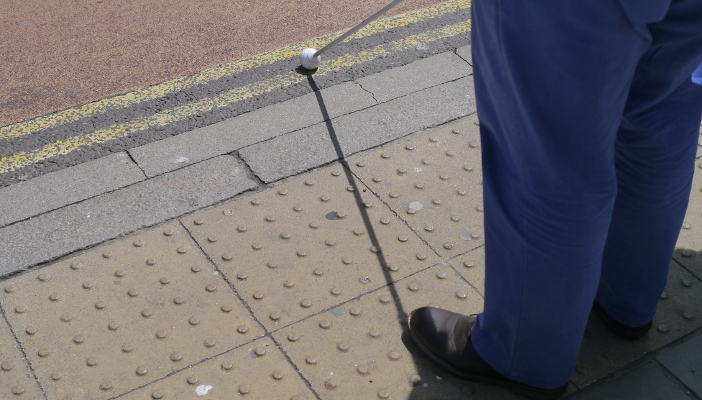
Tactile Paving: Attention versus Guiding Pattern
You might observe little rounded or domes, slightly raised bars present on the surface of the ground while crossing a street and boarding a train. Tactile paving is a kind of paving that could normally be felt either with a cane or underfoot.
These tactile systems are also called the detectable warning plates or ground surface indicators. Attention pattern like rows of any truncated domes arranged in a grid pattern are a typical sort of detectable plate for warning.
Sometimes, a guiding pattern, known as a corduroy pattern, is a common pattern that uses rows of a few rounded narrow lines or bars as markers.
Tactile paving, which can be felt, sends a message to visually impaired walkers concerning navigation. When installed at curb ramps, detectable warning plates identify the change from a certain pedestrian route to traffic or notify a pedestrian to be cautious before a flight of steps.
Safety and accessibility for pedestrians with low to almost no vision have improved significantly since their introduction into the built environment.
What is tactile paving?
As per Wikipedia, it is a certain system that has a surface with textured paving to help pedestrians, particularly those who are either partially or fully blind. Now the question is how they can really help such visually impaired people.
As such any people who are visually impaired may not be able to see the differences between any different levels or even drop level. However, in most cases they are able to recognize if there are any highly contrasting colours or any ultra-bright colours present.
Thus, most of the tactile pavers used have very bright red or yellow colours and that is the standard colours used in most cases along with a certain bumpy surface throughout the world. Any pedestrian can feel the bump on their soles and the pattern can easily be recognized by people who have a visual impairment.
Guiding pattern
Guiding patterns are made up of rounded shape rod-like bars or lines and are sometimes known as corduroy patterns. This can run either transversely or parallel to a path, sending two quite different signals.
The guiding pattern across any path
These bars or lines indicate steps or trip risks ahead when jogging transversely across a certain path. This sign can be located at the bottom or top of stairs, or often at the bottom of a ramp, advising pedestrians to slow down and be cautious.
Guiding pattern along the path
Guiding pattern (known also as wayfinding patterns) include bars or lines that indicate a safe course to follow when running beside a path. Pedestrians can avoid obstructions and risks by staying very close and by following the lines.
Lozenge pattern
Generally, the lozenge pattern refers to tactile paving made up of rows of certain lozenge-shaped tiles having rounded edges that are equally spaced. This style of tactile paving alerts pedestrians that street-level rapid transportation, like a tram, is approaching. They are set back at least 20 inches from the track’s edge to give pedestrians enough time to come to a safe stop.



